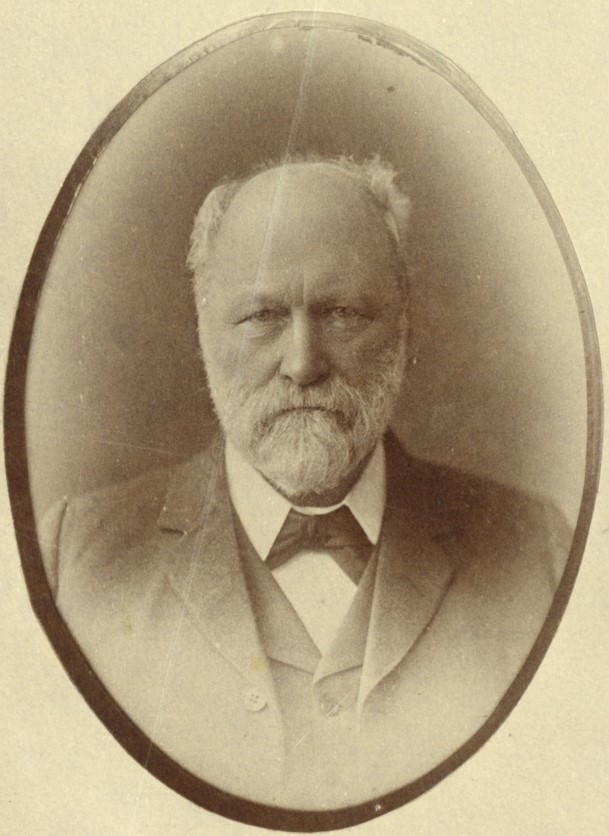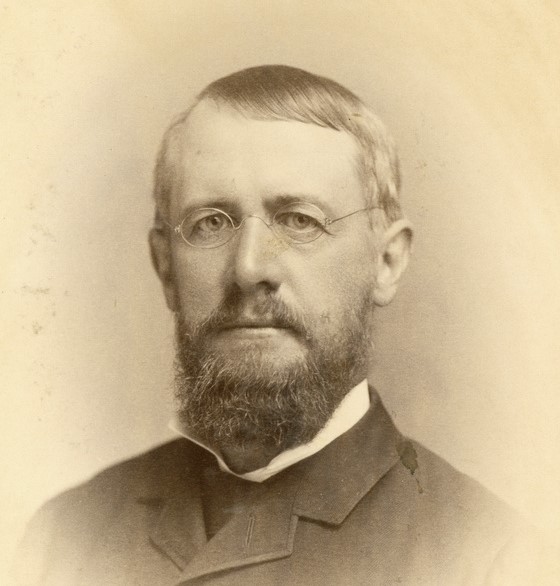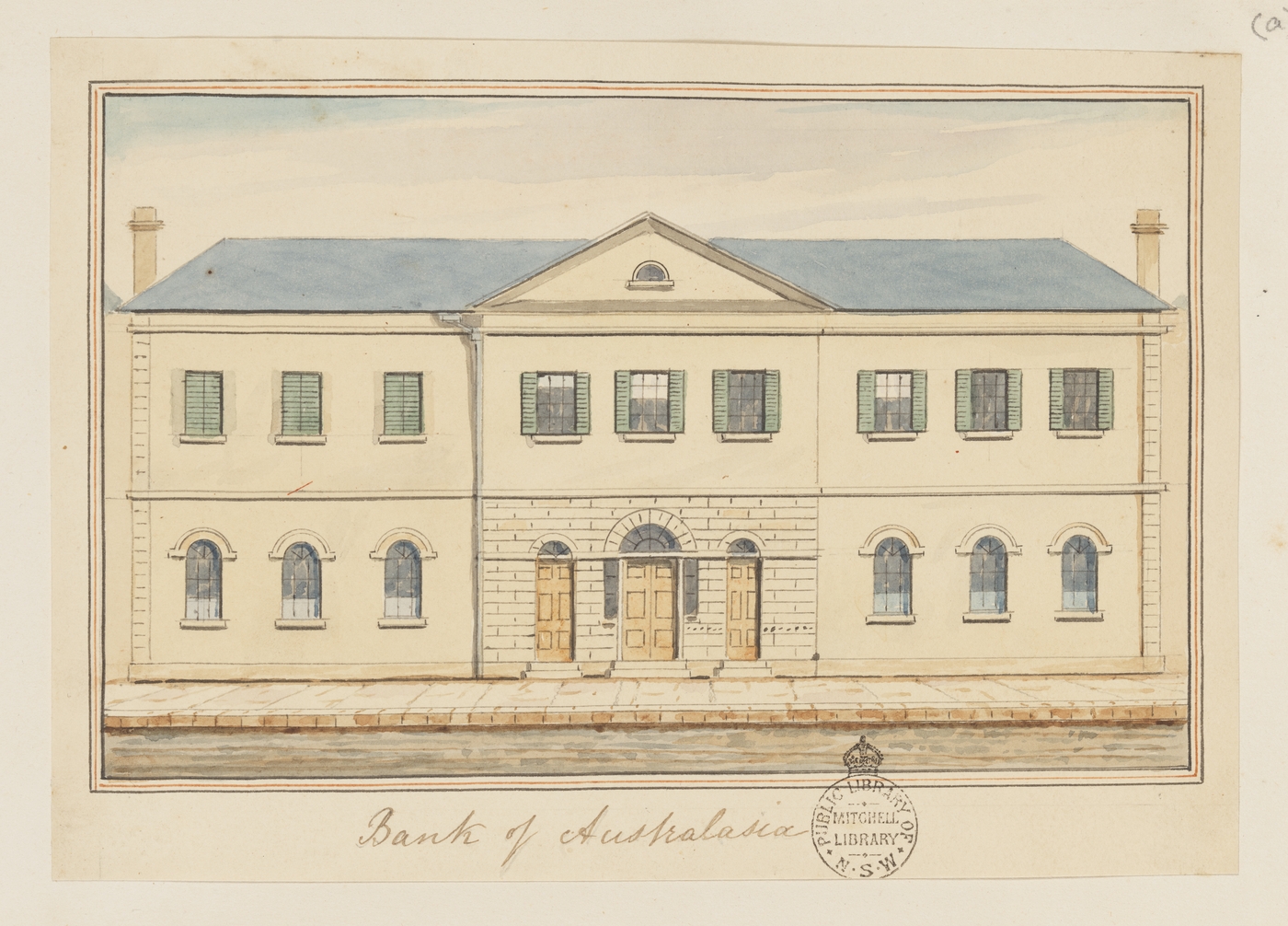|
Robert Waters Moore
Robert Waters Moore M.R.C.S. (1819 – 6 December 1884) born in Cork, Ireland, was a prominent surgeon and medical practitioner in the early days of the colony of South Australia. He succeeded Dr. William Gosse as Colonial Surgeon. History Moore's father was a member of a well-known family in County Limerick, and was a graduate of Trinity College, Dublin. He began the study of medicine in the South Infirmary at Cork in 1835, and in 1840 he commenced working at the Charing Cross Hospital, London, where two years later he was appointed Demonstrator of Anatomy. In August, 1842, he was admitted to the Royal College of Surgeons. He also gained experience at the Westminster Ophthalmic Hospital, and in the year 1845 he took his degree as Doctor of Medicine. In 1846 he migrated to New South Wales, where he gained employment as medical assistant for the notorious entrepreneur Benjamin Boyd of Twofold Bay. While with Boyd Dr. Moore met Oswald Brierly, the artist, who accompanied the ... [...More Info...] [...Related Items...] OR: [Wikipedia] [Google] [Baidu] |
Cork (city)
Cork ( , from , meaning 'marsh') is the second largest city in Ireland and third largest city by population on the island of Ireland. It is located in the south-west of Ireland, in the province of Munster. Following an extension to the city's boundary in 2019, its population is over 222,000. The city centre is an island positioned between two channels of the River Lee which meet downstream at the eastern end of the city centre, where the quays and docks along the river lead outwards towards Lough Mahon and Cork Harbour, one of the largest natural harbours in the world. Originally a monastic settlement, Cork was expanded by Viking invaders around 915. Its charter was granted by Prince John in 1185. Cork city was once fully walled, and the remnants of the old medieval town centre can be found around South and North Main streets. The city's cognomen of "the rebel city" originates in its support for the Yorkist cause in the Wars of the Roses. Corkonians sometimes refer to ... [...More Info...] [...Related Items...] OR: [Wikipedia] [Google] [Baidu] |
Francis Stacker Dutton
Francis Stacker Dutton CMG (18 October 1818 – 25 January 1877) was the seventh Premier of South Australia, serving twice, firstly in 1863 and again in 1865. History Dutton was born at Cuxhaven, Germany, where his father was British vice-consul, in 1818. He was educated at Hofwyl College, near Bern in Switzerland, and afterwards at the high school at Bremen in Germany. At 17, he went to Brazil as a junior clerk and was there for about five years, in Bahia and Rio de Janeiro. In 1839, he joined his older brothers Hampden, Pelham and Frederick in Sydney, went overland to Melbourne, and followed mercantile pursuits for about 18 months, He then joined his brother Frederick at Adelaide and in 1842 or early in 1843, discovered copper at Kapunda, 45 miles north of Adelaide. He showed the specimen he had found to Captain Charles Bagot, who produced a similar specimen that his son had found in the same locality. The land was purchased and samples were sent to England, which showed ... [...More Info...] [...Related Items...] OR: [Wikipedia] [Google] [Baidu] |
William Bundey (mayor)
William Bundey (26 January 1826 – 2 April 1889) was Mayor of Adelaide, South Australia from 1883 to 1886. Bundey was born in Beaulieu, Hampshire. On 12 June 1848 he married Elizabeth Brandis at St James Church, Paddington, London. The family emigrated to South Australia South Australia (commonly abbreviated as SA) is a state in the southern central part of Australia. It covers some of the most arid parts of the country. With a total land area of , it is the fourth-largest of Australia's states and territories ..., arriving on 19 November 1848. He is buried in Walkerville cemetery, Adelaide. References Mayors and Lord Mayors of Adelaide 1826 births 1889 deaths 19th-century Australian politicians {{Australia-mayor-stub ... [...More Info...] [...Related Items...] OR: [Wikipedia] [Google] [Baidu] |
John Brodie Spence
John Brodie Spence (15 May 1824 – 7 December 1902) was a prominent Scottish-born banker and politician in the early days of South Australia. He was a brother of the reformer Catherine Helen Spence. Spence was born in Melrose, Scottish Borders to David Spence (1790–1846), solicitor and first Town Clerk of Adelaide, and Helen Brodie Spence (1791–1887). He arrived in South Australia on 31 October 1839 on the ''Palmyra'' with his mother. Other children of David and Helen on the passenger list were his sisters Catherine, Jessie, Helen and Mary and brother William. His father arrived earlier (13 October 1839) on the ''Dumfries''. The family was struggling to make ends meet, so after some seven months, he and his brother went farming, without much success, and he moved to Adelaide in 1845, joining either the Bank of Adelaide or the Bank of South Australia, where he remained for seven years. He was afterwards for five years official assignee and curator of intestate estates, the ... [...More Info...] [...Related Items...] OR: [Wikipedia] [Google] [Baidu] |
Edward William Hawker
Edward William Hawker (14 January 1850 – 20 September 1940) was a politician in colonial South Australia. Edward Hawker was the eldest son of George Charles Hawker (1818–1895), MHA for Victoria 1858–1865, 1875–1883, and was born at Bungaree, near Clare, in the hut built by the three Hawker brothers, George, Charles and James, who founded the station. He was educated at St. Peter's College, and took his M.L. and M.A. degrees at Cambridge University. He returned to South Australia in 1875 and was admitted to the South Australian Bar in April 1879. He joined in partnership with W. H. Bundey and C. J. Dashwood as "Bundey, Dashwood & Hawker" from 1879 to 1883, then practised alone until 1888. In 1884 he was elected to the South Australian House of Assembly, representing the electorate of Stanley from April 1884 to May 1889. This was the first time father and son had sat in the House concurrently. He resigned to study mining and metallurgy in Europe. He returned to South A ... [...More Info...] [...Related Items...] OR: [Wikipedia] [Google] [Baidu] |
George Charles Hawker
Sir George Charles Hawker (21 September 1818 – 21 May 1895) was a South Australian settler and politician. Early life Hawker was born in London, the second son of Admiral Edward Hawker and his first wife, Joanna Naomi, ''née'' Poore. He was educated partly on the continent, and he entered Trinity College, Cambridge, in 1836 (B.A.1841, M.A. 1854). Career in Australia Together with his brother Charles, Hawker went to South Australia in 1840 travelling aboard the ''Lysander''. He had some capital to start with, and after trying two sites which were found to have insufficient water, established a sheep station some distance to the north of Adelaide (north of the Clare Valley), afterwards known as ''Bungaree''. He had two brothers with him at first and all three soon adapted themselves to pioneer conditions; some of the early station buildings in fact were put up with their own hands. In 1841 they were members of a party of 10 that went out to reclaim a large number of sheep tha ... [...More Info...] [...Related Items...] OR: [Wikipedia] [Google] [Baidu] |
William Milne (politician)
Sir William Milne (17 May 1822 – 23 April 1895) was an Australian entrepreneur and politician, serving as the member for Onkaparinga in the South Australian House of Assembly from 1857 to 1868. He was elected to the South Australian Legislative Council in 1869, and was President of the South Australian Legislative Council from 25 July 1873 to 1881. Life Born in Wester-Common, near Glasgow, Milne was educated in Glasgow and emigrated to South Australia, arriving in the ''Palmyra'' at Port Adelaide on 29 October 1839, where he married Eliza Disher on 4 March 1842. He formed a partnership with brother-in-law James Disher as wine merchants and as "Disher & Milne", in July 1846, purchased the Hindley Street wine and spirit business of Patrick Auld, who was returning to England. The business was highly successful, eventually becoming Milne and Company. In 1857 Milne sold his distillery and was elected to the South Australian House of Assembly as one of the members for Onkaparin ... [...More Info...] [...Related Items...] OR: [Wikipedia] [Google] [Baidu] |
Henry Ayers
Sir Henry Ayers (now pron. "airs") (1 May 1821 – 11 June 1897) was the eighth Premier of South Australia, serving a record five times between 1863 and 1873. His lasting memorial is in the name Ayers Rock, also known as Uluru, which was encountered in 1873 by William Gosse. Overview Ayers was born at Portsea, Portsmouth, Hampshire, England, the son of William Ayers, of the Portsmouth dockyard, and Elizabeth, née Breakes. Educated at the Beneficial Society's School (Portsea) he entered a law office in 1832. He emigrated, as a carpenter, to South Australia in 1840 with his wife, Anne (née Potts) with free passages. Until 1845 he worked as a law clerk, he was then appointed secretary of the South Australian Mining Association's Burra Burra mines. Henry Roach was chief Captain, responsible for day-to-day operations, from 1847 to 1867. Within a year the mine employed over 1000 men. For nearly 50 years, Ayers was in control of this mine, initially as the secretary and late ... [...More Info...] [...Related Items...] OR: [Wikipedia] [Google] [Baidu] |
Samuel Way
Sir Samuel James Way, 1st Baronet, (11 April 1836 – 8 January 1916) was an English-Australian jurist who served as Chief Justice of the Supreme Court of South Australia from 18 March 1876 until 8 January 1916. Background Way was born in Portsmouth, England. Reverend James Way, his father, was a clergyman in the Bible Christian Church, who emigrated to Adelaide, South Australia in 1850 along with his wife and four younger children to establish a mission. Samuel, the eldest child, remained behind, studying at Shebbear College in Shebbear, a small village in North Devon, and later at a school in Chatham in Kent. He left England to rejoin his family at the end of 1852, arriving in Adelaide in March 1853. He was soon employed in the office of John Tuthill Bagot, at that time a barrister, and in 1856 became an articled clerk to Alfred Atkinson (c. 1825 – 4 June 1861), solicitor of King William Street. Legal and judicial career On 25 March 1861, Way was admitted to the Sout ... [...More Info...] [...Related Items...] OR: [Wikipedia] [Google] [Baidu] |
William Cleaver Francis Robinson
Sir William Cleaver Francis Robinson (14 January 1834 – 2 May 1897) was an Irish colonial administrator and musical composer, who wrote several well-known songs. He was born in County Westmeath, Ireland, and was educated at home and at the Royal Naval School. He joined the Colonial Office service in 1858 and became the president of Montserrat in 1862. He married Olivia Edith Deane in 1862. He began serving as governor of the Falkland Islands in May 1866 and governed Prince Edward Island from 1870–1873, helping the island join a union with Canada. He became the governor of the Leeward Islands in 1874 and served his first term as the Western Australia governor from 1875–1877. He was appointed governor of the Straits Settlements in 1877 and served as governor of Western Australia a second term from April 1880 to February 1883. Robinson became the governor of South Australia in 1883 until 1889. He was a temporary governor of Victoria, Australia in 1889, but was unable to ... [...More Info...] [...Related Items...] OR: [Wikipedia] [Google] [Baidu] |
Bank Of Australasia
The Bank of Australasia was an Australian bank in operation from 1835 to 1951. Headquartered in London, the bank was incorporated by Royal Charter in March 1834. It had initially been planned to additionally include first South Africa and then Ceylon in the bank's operations; however, both these moves were blocked by the Lords of the Treasury. Its first branch opened in Sydney on 14 December 1835, followed by branches in Hobart and Launceston on 1 January 1836, in the latter city by taking over the former Cornwall Bank. A Melbourne branch opened on 28 August 1838 and an Adelaide branch on 14 January 1839. It opened a Perth branch in May 1841 when it absorbed the original Bank of Western Australia; however, the branch was closed in 1844 and the bank would not reopen in that city until 1894. It suffered financial difficulties during the 1840s depression, in part because of a controversial loan to the failing Bank of Australia which resulted in significant litigation. Having op ... [...More Info...] [...Related Items...] OR: [Wikipedia] [Google] [Baidu] |
William F
William is a male given name of Germanic origin.Hanks, Hardcastle and Hodges, ''Oxford Dictionary of First Names'', Oxford University Press, 2nd edition, , p. 276. It became very popular in the English language after the Norman conquest of England in 1066,All Things William"Meaning & Origin of the Name"/ref> and remained so throughout the Middle Ages and into the modern era. It is sometimes abbreviated "Wm." Shortened familiar versions in English include Will, Wills, Willy, Willie, Bill, and Billy. A common Irish form is Liam. Scottish diminutives include Wull, Willie or Wullie (as in Oor Wullie or the play ''Douglas''). Female forms are Willa, Willemina, Wilma and Wilhelmina. Etymology William is related to the given name ''Wilhelm'' (cf. Proto-Germanic ᚹᛁᛚᛃᚨᚺᛖᛚᛗᚨᛉ, ''*Wiljahelmaz'' > German ''Wilhelm'' and Old Norse ᚢᛁᛚᛋᛅᚼᛅᛚᛘᛅᛋ, ''Vilhjálmr''). By regular sound changes, the native, inherited English form of the name shoul ... [...More Info...] [...Related Items...] OR: [Wikipedia] [Google] [Baidu] |






